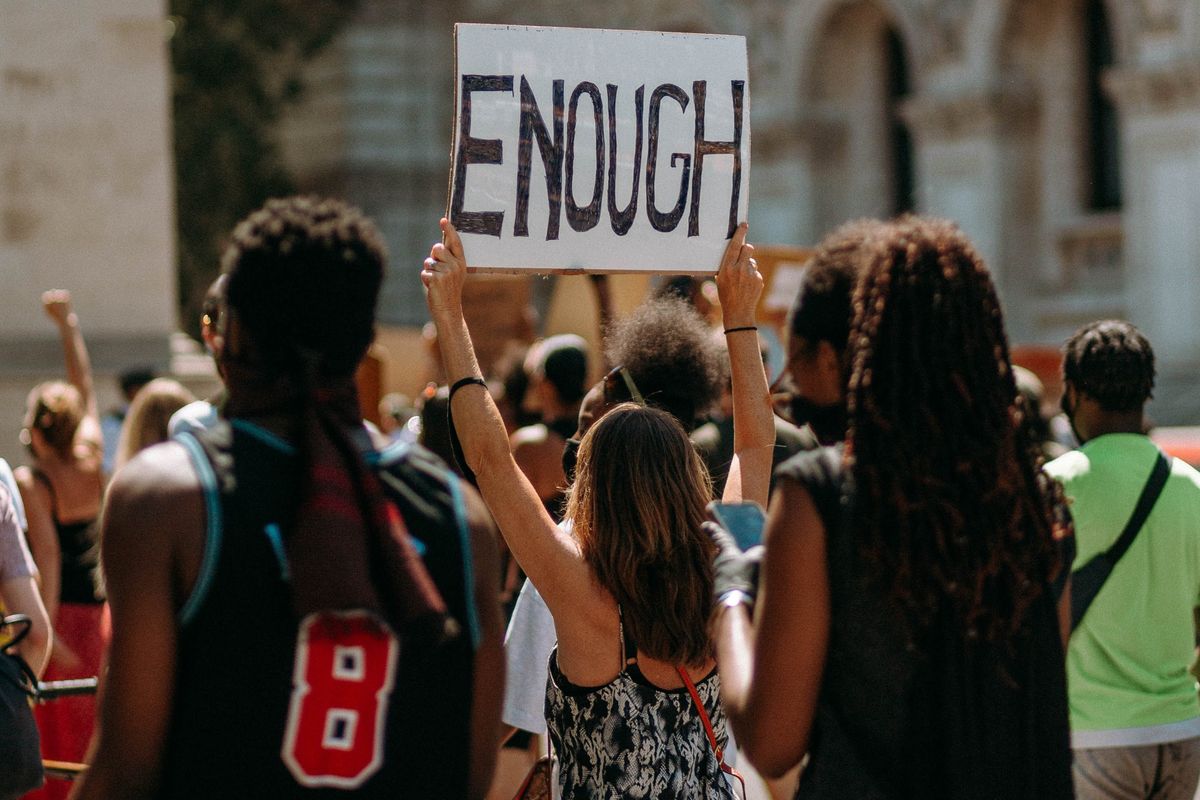Alleged school shooting thwarted after a brave high schooler left a tip on Sandy Hook hotline
This won't solve everything, but it's a step in the right direction.
A hallway at Menlo-Atherton High School and the Sandy Hook Promise app.
There is a lingering feeling in America that we will never fix the school shooting problem because politicians have failed to take effective action to make sure our schools are safe from mentally disturbed people with firearms. If there’s any good news, it’s that the 2024-2025 year saw a 23% decline in school shootings over the previous year. There were 254 total school shootings in 2024-25 and nearly 330 shooting incidents in the last two years. There was also some positive news on September 10, 2025, in Northern California when a student reported a potential shooter who planned an attack in the Sequoia Union High School District out of Redwood City.
The student became aware of the potential attack after seeing a social media post and reported it to Sandy Hook Promise's Say Something Anonymous Reporting System. "What we know is that a student saw a concerning post on a friend's Instagram feed and reported it to our anonymous reporting system manned at our crisis center down in Miami," Nicole Hockley, cofounder of Sandy Hook Promise, and mother of Dylan, who was one of 20 children killed in the 2012 Sandy Hook shooting, said according to ABC7 News. The suspect was a former student at Menlo-Atherton High School who posted photos of ammunition, firearms, and a mapped-out plan to attack the school.
“We just stopped our 19th school shooting.”
That’s the reality- and proof that prevention works.
Learn more: https://t.co/TBhtGwRDcM pic.twitter.com/KpINOKRPhX
— Sandy Hook Promise (@sandyhook) September 22, 2025
After the tip was reported, Sandy Hook Promise notified the police, and Menlo-Atherton High School was quickly secured. The police detained the former student who allegedly planned the attack, removed weapons from their home, and placed them on a psychiatric hold.
"Because of the courageous actions of one student—a single voice speaking up—this community was spared unimaginable heartbreak," Hockley said. "Every act of violence we prevent, whether it's a planned school shooting, youth suicide, or bullying, is our Promise in action, creating a safer future for all children.
"Sometimes we receive hundreds of tips about a potential threat. Other times, as we saw in California during this incident, it just takes one. At a time where many feel powerless against gun violence, this student's bravery proves that each of us has the ability to make a difference. Gun violence is not inevitable—it is preventable—and prevention begins when we recognize the signs and take action," Hockley continued.
Wow this is incredible!
Sandy Hook Promise Prevents a School Shooting in California & At Least 19 Attacks Have Been Prevented by the Organization Since 2018
@sandyhook @NicoleHockley https://t.co/p2bgHVY0KH
— Robert Wolf (@robertwolf32) September 23, 2025
To further protect our children from gun violence in schools, Sandy Hook Promise also advocates for two pieces of bipartisan legislation: the PLAN for School Safety Act and the STOP School Violence Act.
The PLAN Act will provide schools with localized essential safety planning resources by strengthening state-based expert centers, contributing to the nationwide effort to protect children from school shootings and violence. The STOP Act would make annual grants available to states, school districts, and tribal organizations to bring evidence-informed programs and strategies to schools.
There is no magic cure for school shootings. Still, the more tools we have to stop them before they occur, whether that’s tip lines, preventative education at schools, red flag laws, or gun control, we can hopefully reduce the number of tragedies that affect our children and communities by using any means necessary.

